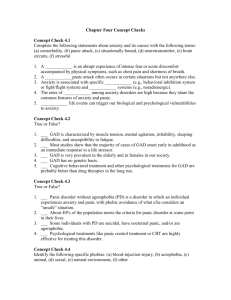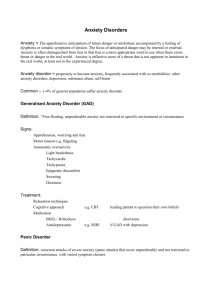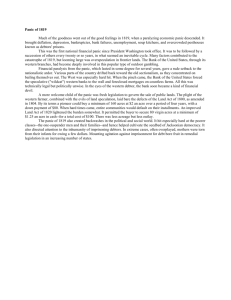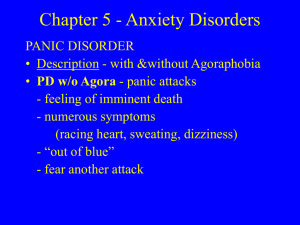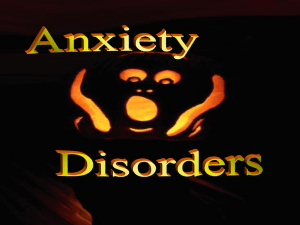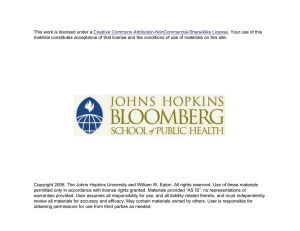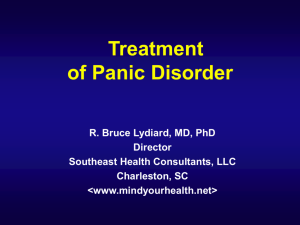Panic Disorder
advertisement
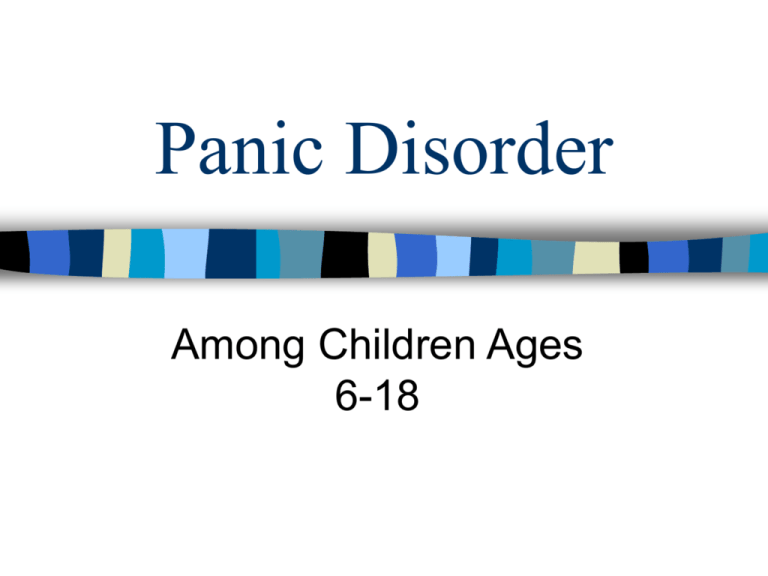
Panic Disorder Among Children Ages 6-18 Introduction Anxiety is one of the most well known psychiatric problems found in children through the adolescent years. Panic disorder is a type of anxiety illness. characterized by a series of attacks of anxiety or terror. Attacks last for 15 to 30 minutes. Somatic and Cognitive Symptoms. Somatic: shortness of breath, accelerated heart rate, chest pain, choking sensations, dizziness, tingling or numbing sensations, hot or cold flashes, sweating, trembling, and nausea. Cognitive: fear of dying, going crazy, or losing control. Places that often trigger an attack are crowded malls, theaters, auditoriums, restaurants, and schools. Testing Self-report questionnaires are typically used The Revised Child Anxiety and depression scale The State-Trait Anxiety Inventory for Children The Fear Survey Schedule for Children The Childhood Anxiety Sensitivity Index Facts Girls had higher rates of panic disorder then boys. Symptoms of panic disorder decreased as children became older and younger children displayed higher levels of anxiety then older children. The most common symptom among all the children was, trembling, dizziness, pounding heart, and sweating. Statistics 16% of children with panic disorder said they had less social support and more stress and pressure from the family then children who did not have the disorder. 8% and 12% of children admit to having forms of anxiety. 35% to 63% of adolescents are said to have at least one panic attack in their life. Statistics Only 2 out of 104 children and adolescents who had panic attacks sought professional help. 3 out of 4 adolescence with panic disorder reported their first panic attack occurred when they were younger then twelve. 18% of adults with panic disorder have claimed that their first panic attacks started before age 10 and the peak of extreme panic was between ages 15-18. Causes Children who have the characteristic of being inhibited and shy have a greater chance of developing panic disorder. Separation anxiety as a toddler could lead to panic disorder at a later age. Effects Without Treatment Panic attacks can get in the way of a child's or adolescent's relationships, schoolwork, and normal social development. In some severe cases, the child may be too afraid to leave their house. This pattern of avoiding certain places or situations is called agoraphobia. Treatment Psychosocial and psychopharmacological treatments are available. Cognitive behavioral programs require five treatment sessions. Anti-anxiety medications are used as well as antidepressants and heart medications to control irregular heartbeats.
